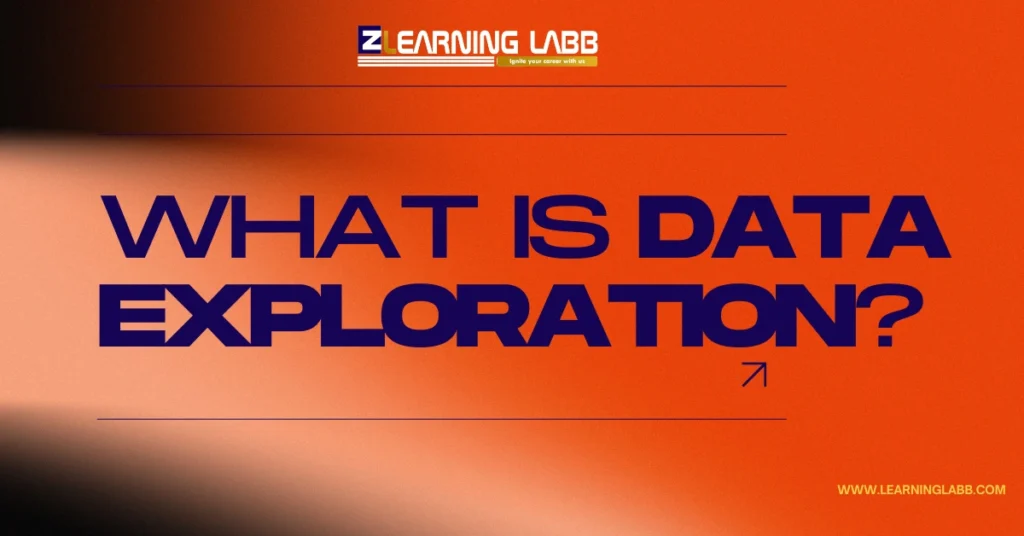What Is Data Exploration? Data is everywhere, shaping the way businesses operate, scientists innovate, and decisions are made. But here’s the catch: raw data on its own isn’t very useful. Without a structured approach to understanding it, it’s just numbers and text sitting idly in databases. That’s where data exploration steps in—an integral process that transforms disorganised information into meaningful insights.
So, what is data exploration, and why does it matter? Think of it as the process of getting to know your data—like opening a book for the first time and flipping through the pages to get a sense of the story.
It’s a must-have skill for anyone dealing with data, from analysts to machine learning engineers, because it helps you answer questions like: What’s in the data? Are there any anomalies? What trends stand out?
Let’s find out!
What Is Data Exploration?
Data exploration involves examining raw data to identify trends, understand relationships, and prepare the data for further analysis or modelling. Think of it as detective work. Analysts, data scientists, and machine learning engineers explore datasets to make sense of the numbers, text, or images in front of them.
Unlike data mining, which focuses on finding patterns using algorithms, data exploration is often manual, interactive, and visual. For example, you might use a histogram to check the distribution of customer ages in a marketing dataset.
At its core, it’s the process of examining, visualising, and understanding datasets to identify patterns, spot anomalies, or get a general sense of what the data holds. It’s often the first step in data analysis, crucial for building models or making informed decisions.
Imagine trying to navigate a new city without a map or directions. Similarly, diving into raw data without exploring it first is like wandering aimlessly. Data exploration gives you that much-needed “map,” helping you uncover insights and decide your next course of action.
“The goal is to turn data into information and information into insight.” – Carly Fiorina

Types of Data Exploration
There are several types of data exploration, each serving a specific purpose.
- Univariate Analysis: Focuses on analysing a single variable. For instance, studying the average temperature of a city over a year.
- Bivariate Analysis: Explores relationships between two variables, such as customer income versus spending habits.
- Multivariate Analysis: Involves multiple variables to uncover complex relationships.
- Graphical Exploration: Using visualisation tools like scatter plots, heatmaps, or bar charts to analyse data trends.
- Descriptive Statistics: Calculating metrics like mean, median, mode, and standard deviation to summarise data.
Each of these types plays a role in different stages of analysis, and combining them ensures a comprehensive understanding of the data.
Importance of Data Exploration
Why is data exploration important? Without it, you’re working blindly. Here are some compelling reasons:
- Understanding Data Quality: Identifies missing, duplicate, or inconsistent data.
- Spotting Trends and Outliers: Helps you detect patterns and unexpected anomalies.
- Prepares Data for Modelling: Good models need clean, well-understood data.
- Improves Decision-Making: Offers insights that drive strategic actions.
For instance, a sales team could use basic data exploration techniques to identify which products sell best during the holiday season, boosting targeted promotions.
How Does Data Exploration Work?
The process of data exploration can vary, but it generally includes the following steps:
- Data Collection: Gather data from multiple sources (databases, APIs, spreadsheets).
- Data Cleaning: Remove errors, fill in missing values, and standardise formats.
- Visualisation: Create charts and graphs to make the data understandable.
- Statistical Analysis: Use metrics like variance or correlation to summarise data.
One question often asked is, what is the best language for data exploration? While Python and R are the most popular choices, tools like SQL and Excel also play a vital role. Python’s libraries like Pandas, Matplotlib, and Seaborn make it particularly powerful for handling large datasets.

Basic Data Exploration Techniques
Here are some must-know techniques:
- Data Cleaning: Start by removing duplicates, filling missing values, and resolving inconsistencies.
- Descriptive Statistics: Compute metrics like mean, median, and variance.
- Data Visualisation: Create histograms, box plots, and scatter plots for better insights.
- Correlation Analysis: Determine relationships between variables using correlation coefficients.
Remember, the objective of data exploration isn’t just to organise data but to understand what story it tells.
Data Exploration Tools
Today, many tools simplify the process of exploring data. Some of the most commonly used include:
- Tableau: A visualisation tool that makes data easy to understand through dashboards.
- Power BI: A Microsoft tool for creating interactive reports.
- Python: With libraries like Pandas, NumPy, and Matplotlib for coding-based exploration.
- Excel: Perfect for smaller datasets and basic visualisation.
- R: Preferred for statistical analysis and exploration in research contexts.
ZELL’s courses in Data Science and Machine Learning cover these tools in-depth, making it easier for professionals to master them.
Data Exploration vs Data Mining
It’s easy to confuse data exploration with data mining. While they overlap, their goals differ:
- Data Exploration: Focuses on understanding raw data and identifying trends manually or visually.
- Data Mining: Uses algorithms and machine learning to uncover hidden patterns or make predictions.
Think of data exploration as the initial research phase, while data mining digs deeper for actionable insights.
Machine Learning Data Exploration
Exploration is the first step in creating a machine learning model. Before feeding data into algorithms, it’s crucial to:
- Check for missing or duplicate values.
- Analyse variable distributions and relationships.
- Identify biases in the dataset that could affect predictions.
Without proper exploration, even the best machine learning models may fail to perform effectively.
What Is the Best Language for Data Exploration?
While there isn’t a universal answer, Python has emerged as the most popular choice due to its flexibility and wide range of libraries. R is another excellent option, especially for statistical exploration. SQL is invaluable for querying databases, while Excel is often sufficient for simpler tasks.
If you’re a beginner wondering where to start, enrolling in a comprehensive course like ZELL’s Data Science Program can guide you through the learning process.

On A Final Note…
Data exploration is the foundation of every data-driven project, from marketing strategies to machine learning models. It not only simplifies complex datasets but also sets the stage for actionable insights. By mastering the types of data exploration, understanding its importance, and using the right techniques and tools, anyone can become proficient in data analysis.
To take your skills to the next level, consider enrolling in ZELL’s industry-aligned courses. Whether you’re exploring data for personal projects or professional goals, the right education can make all the difference.





